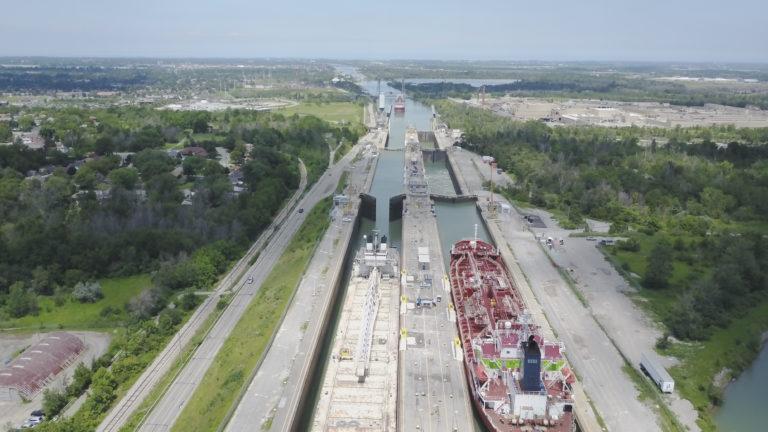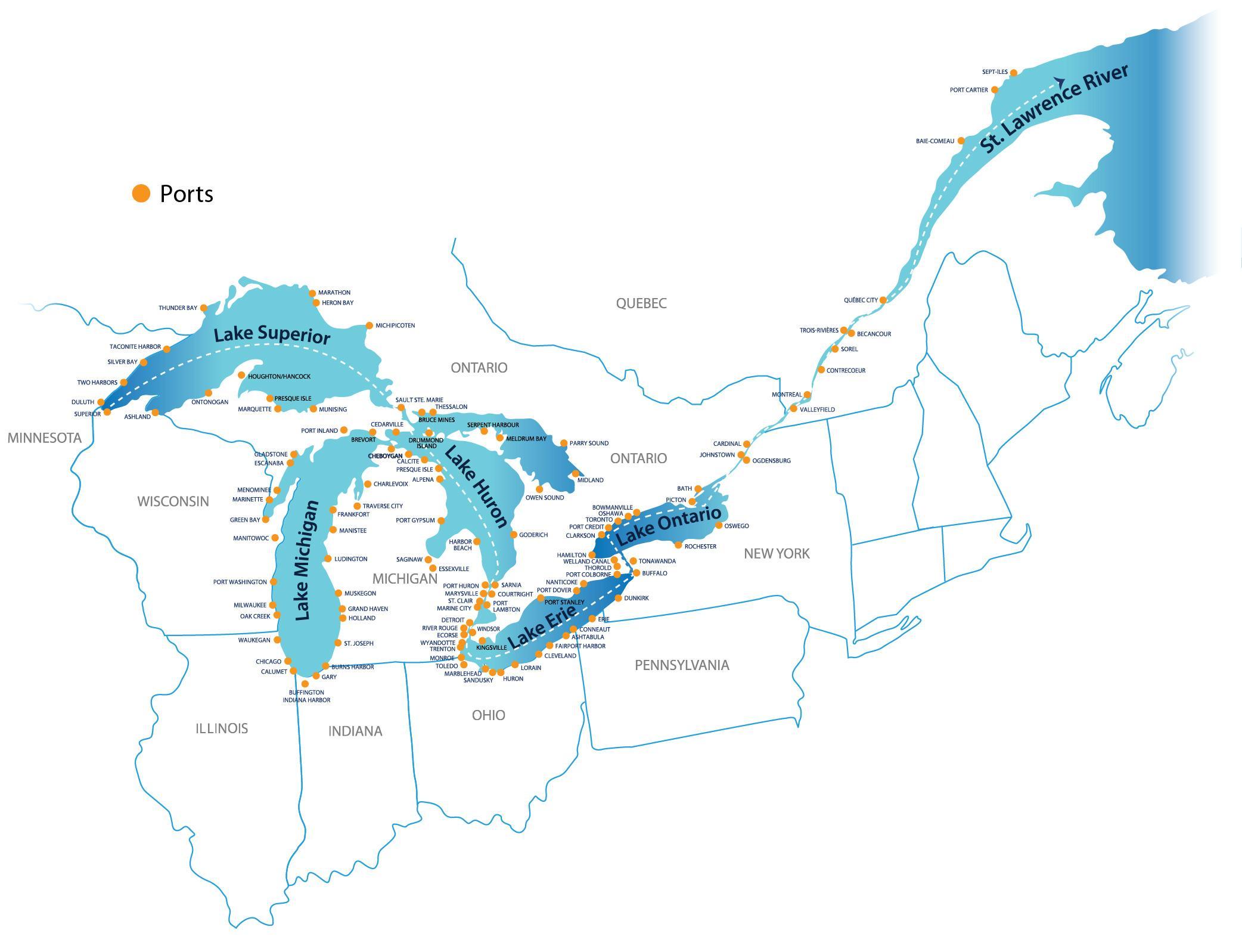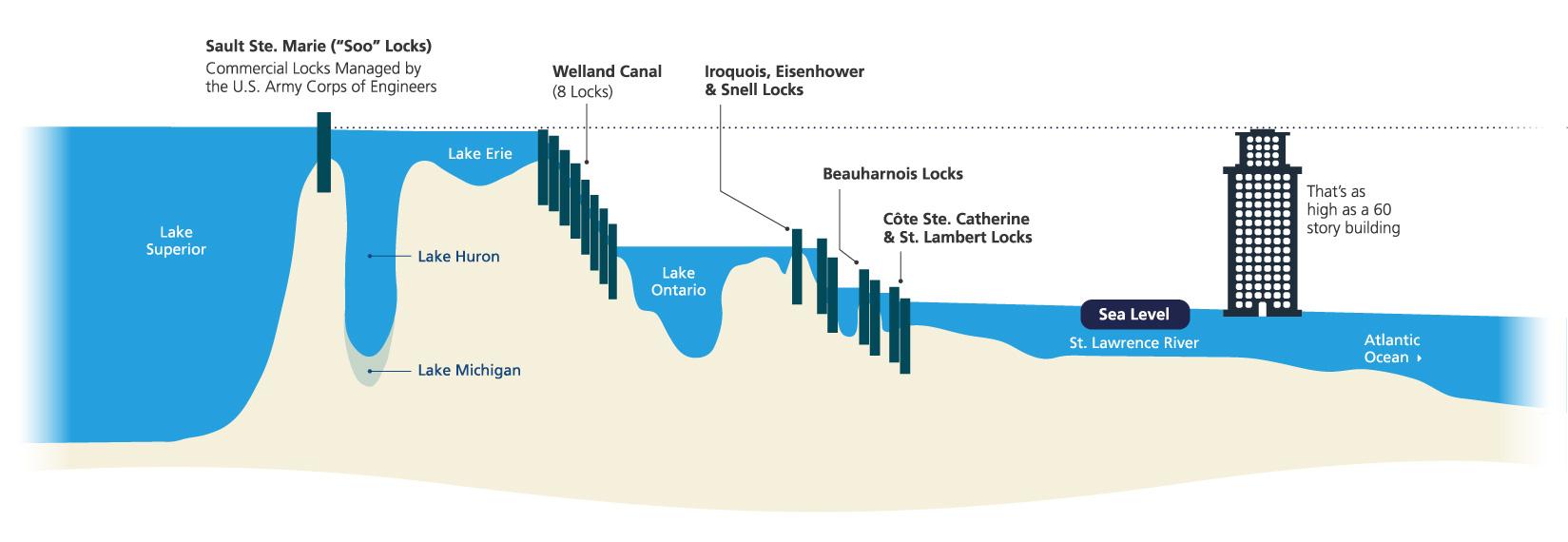Great Lakes-St. Lawrence cities were founded as trading posts along a vast marine highway which facilitated commerce in an era pre-dating railroads and highways.
This relationship to the water enables the region to thrive. Today, the Great Lakes-St. Lawrence region is an economic powerhouse and the industrial heartland of both the United States and Canada.

The Great Lakes-St. Lawrence River waterway is the longest inland deep-draft navigation system in the world, connecting more than 110 commercial ports in Canada and the United States. In remote locations, a port might be nothing more than a single dock constructed to serve an adjacent industry.
In urban areas, ports include multiple docks creating bustling harbors teeming with commerce in support of local business and jobs. Great Lakes – St. Lawrence ports fall into one of three ownership/governance models: private ports, public ports, or a mixture of public and private control.

Lock infrastructure on the Great Lakes and St. Lawrence Seaway forms an elaborate lift system allowing ships to move across a vast expanse of territory in which water levels fall more than 182 m (600 feet) from Lake Superior to the Atlantic Ocean. During that journey, a vessel will pass through 16 separate locks. The Soo Locks have made the St. Marys River navigable, connecting Lake Superior to the lower four Great Lakes and the St. Lawrence Seaway. The Welland Canal lock system connects Lake Erie and Lake Ontario, enabling vessels to bypass Niagara Falls. And the St. Lawrence Seaway lock system has tamed the St. Lawrence River, enabling ships to sail from Lake Ontario to the Atlantic Ocean since 1959.

A vessel traveling downstream would find the lock chamber already filled with water. The entrance gate is opened and the vessel moves in. The entrance gate is then closed. A valve is opened and the lock chamber is drained, lowering the vessel. Once the vessel reaches the desired level, the exit gate is then opened and the vessel moves out of the chamber. This process is reversed for a vessel traveling upstream.
The Great Lakes – St. Lawrence navigation system is dominated by specialty ships designed to serve the region’s agricultural and manufacturing economy. In recent years, billions have been spent to refurbish and build new vessels for the region that have the latest engine technology and hull designs to increase fuel efficiency and decrease air emissions; double hulls to prevent spills in the event of an accident, and state-of-the-art cargo handling systems to minimize dust and cargo residue.
Every year, ships deliver more than 252.1 million metric tons of cargo, worth over $120.9 billion (CAD$ 157.2 Billion) on the Great Lakes-St. Lawrence waterway. These vessels transport large quantities of bulk cargo such as iron ore for the steel industry, petroleum for power generation, stone & cement for construction, and agricultural products for domestic and overseas consumption. Other Great Lakes ships are designed for general cargoes such as machinery, steel and bagged food products.
